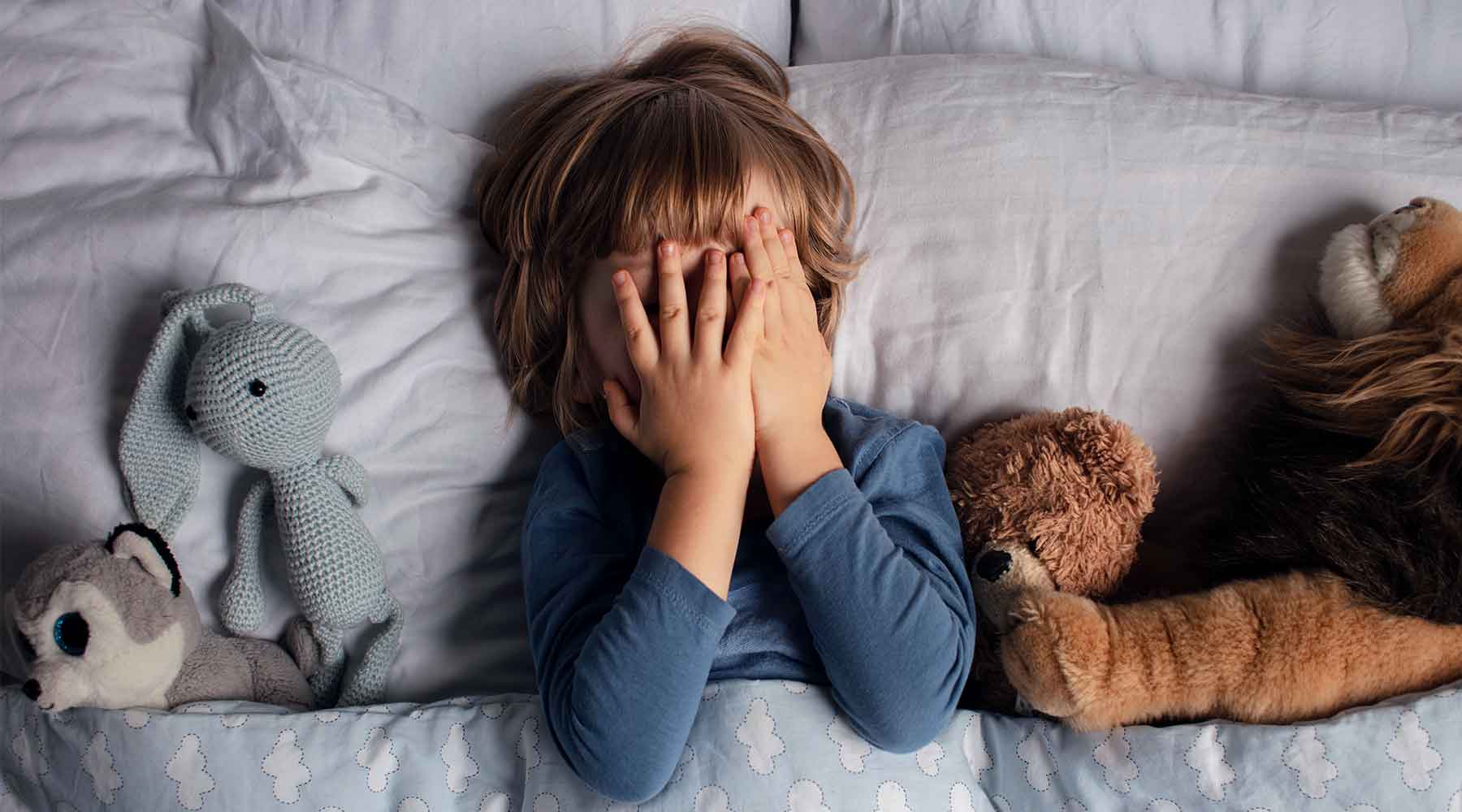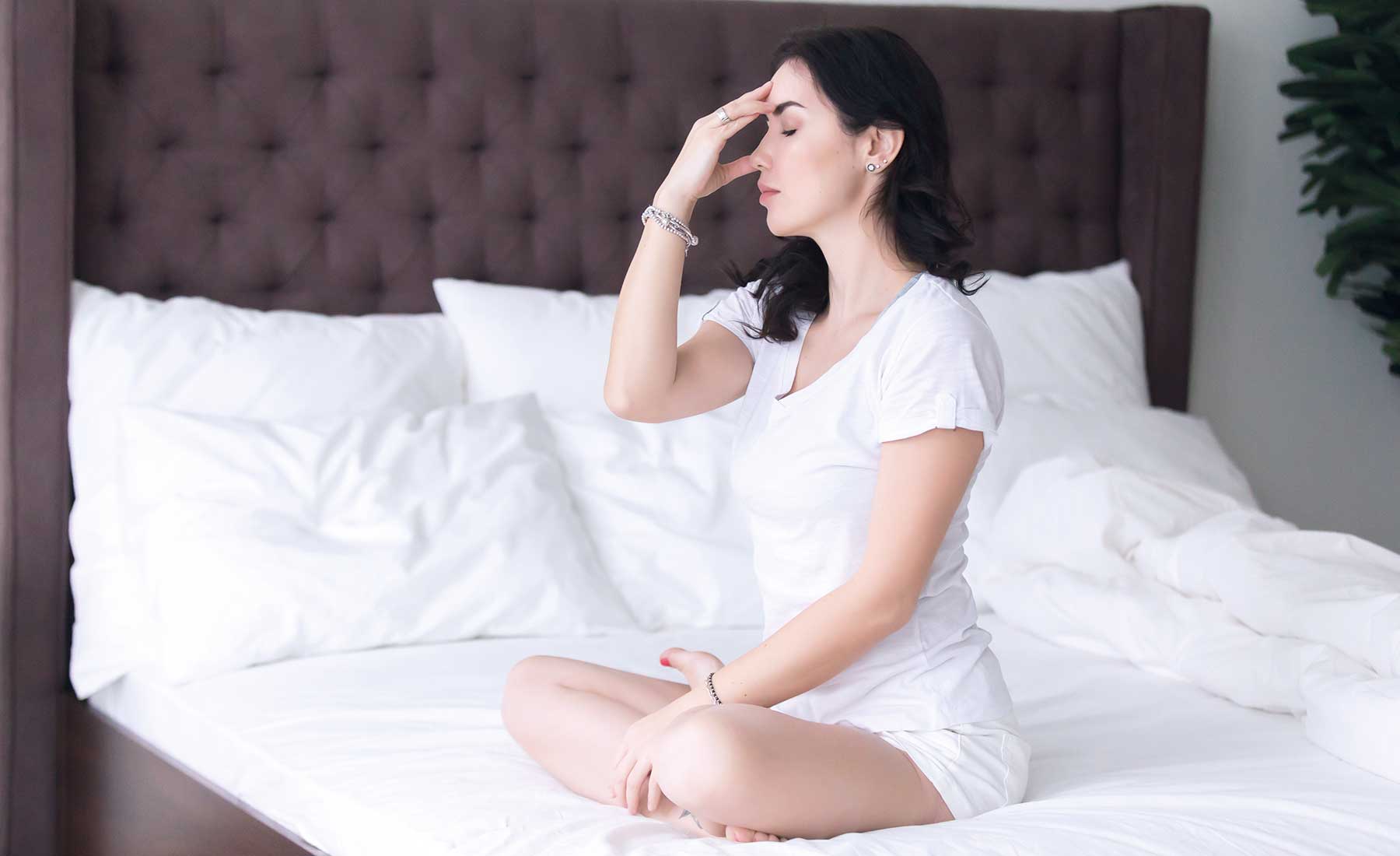
The most common sleep disorders in children
Sleep disorders can occur as early as childhood and have a major impact on a child's health and development. Sleep expert and pediatrician Dr. Alfred Wiater explains which sleep disorders are most common in children and what parents can do to support their little ones' sleep.
Table of contents
- When children can't sleep
- The most common sleep disorders in children
- Conclusion
1. When children can't sleep
Sleep plays a central role in our lives and is particularly important in childhood, when we are in the crucial phases of human development and growth. However, a peaceful and restful sleep is often a major challenge not only for us adults, but especially for children. This makes it all the more important to support children in developing healthy sleeping habits and getting enough sleep in their hectic everyday lives. This is because persistent sleep problems can develop into serious sleep disorders at a young age and impair a child's healthy development.
The pediatrician, sleep medicine specialist and
Good to know: In this post you can read what distinguishes sleep in childhood and adulthood and here you will find helpful tips to support your child's healthy sleep.
2. The most common sleep disorders in children
#1 Chronic Insomnia
The most common in children and adults is chronic insomnia. Insomnia is a non-organic sleep disorder that affects falling asleep, sleeping through the night, and waking up too early, and results in a person not feeling alert during the day. Insomnia is said to be chronic when the problems occur at least three times a week over a period of one to three months. Around 20% to 30% of children and therefore their parents are affected by this.
Insomnia in children can manifest itself in considerable resistance to going to bed, repeatedly putting off falling asleep, and repeatedly waking up and crying at night. Children up to the age of 5 are particularly affected. In older children and adolescents, insomnia is often caused by fears and worries that prevent them from falling asleep and cause them to wake up again and again.
First Aid: Insomnia in children can be a challenge for the whole family - but there are effective treatment options! A consistent bedtime routine and calming bedtime rituals are usually the first steps that can stabilize sleep behavior and lead to an improvement in well-being for both the child and their parents.
#2 Obstructive sleep apnea

At the obstructive sleep apnea (OSA), also known as obstructive sleep apnea syndrome, is a breathing-related sleep disorder that affects around 5% of children. It involves a sudden constriction or closure of the upper airways during sleep, which repeatedly interrupts the supply of oxygen. Most affected children therefore have pauses in their breathing and snore at night. The children do not sleep well and often show symptoms during the day as well.In contrast to adults who suffer from OSA, the main symptom is not daytime fatigue, but restless, hyperactive behavior with limited concentration and endurance.
The most common cause of OSA in children is enlarged pharyngeal and palatine tonsils. Obesity promotes obstructive sleep apnea, as does an anatomically caused narrowing of the upper airways, e.g. a receding chin, which causes the tongue to move backwards during sleep and narrows the airways. However, not all children who snore have obstructive sleep apnea. Nevertheless, habitual snoring can also disturb sleep and thus affect children during the day. If in doubt, a sleep laboratory test can help.
First Aid: If the pharyngeal and palatine tonsils are enlarged, tonsil surgery can help many children. If this is not the cause of the OSA, early orthodontic treatment and myofunctional support (ie therapy to improve muscle function) can be helpful. Mechanical respiratory support during sleep, as is often used in adults, is rarely necessary in children.
#3 Sleepwalking
At the sleepwalking (somnambulism) There is a sudden rise from bed and the associated unusual behavior. Those affected are restless, aloof and/or aggressive and often perform absurd actions that are not directed at a specific goal. They are disoriented and react confusedly when spoken to. There is a high degree of insensitivity to pain, so that self-harm also occurs.
The highest incidence of sleepwalking is at 13.4% at the age of 10. The risk of sleepwalking occurring is significantly increased if one or both parents of the affected child also sleepwalk. In the majority of those affected, the condition spontaneously subsides by adolescence. Lack of sleep, psychological stress situations and fever are considered factors that can provoke or intensify the occurrence of the disorder.
The main risk of somnambulism is self-harm. Those affected can fall down the stairs while sleepwalking, open the window and jump out, or run into the street. There is no such thing as the proverbial sleepwalker's safety. Attention: Waking up during sleepwalking can provoke aggressive behavior and, in particular, leads to unnecessary interruption and disturbance of sleep.
First Aid: Drug therapy is generally not used for sleepwalking in children and adolescents. The focus is on detailed advice about classifying the symptoms as a developmental phenomenon that usually stops as the child gets older. However, it is strongly recommended that the sleeping environment at home and in unfamiliar surroundings be secured so that injuries cannot occur during sleepwalking.
#4 Night terrors
Night terrors (Pavor nocturnus) occur most frequently in early childhood and are typically accompanied by shrill screaming and fearful behavior, accompanied by significant excitement. The child usually sits in bed and resists any attempts to calm them down. Night terrors typically occur during deep sleep and can be followed by sleepwalking. The children usually have no memory of the waking episode the next day.
At around 34%, children aged 1.5 years are most frequently affected.One third of children who had a night terror in early childhood developed sleepwalking in later childhood. The occurrence of night terrors can therefore be deduced from the family history of sleepwalking.
First Aid: Unfortunately, there are no direct treatment options. The best thing you can do is to calm the child down while the symptoms are present. In order to be able to clearly classify the problem, it is also helpful to make a video of the events and have it assessed by a pediatrician.
#5 Nightmares in Children

Nightmares are characterized by recurring, mood-stressing dreams with threatening content that are also remembered. Unlike night terrors, nightmares usually only occur during REM sleep in the early morning hours. When waking up from a nightmare, those affected are quickly oriented again. The occurrence of nightmares in children is highest between the ages of 6 and 10. Almost all children and adolescents have experienced nightmares at some point, but around 5% of them are affected once a week or more often.
The descriptions of the parents or partners and the children themselves are crucial for diagnosing nightmares. It should be noted that dreams are only considered memorable from the age of 3 and that reliable data collection is only possible from this age.
First Aid: In the acute situation after waking up from a nightmare, children should briefly recount the dream content so that they can then go back to sleep after a short period of calming down. Depending on the nature and content of the dream, psychotherapeutic support is recommended.
#6 Restless Leg Syndrome (RLS)
Restless legs syndrome (RLS) describes an unpleasant urge to move the legs, and rarely the arms. It occurs exclusively or predominantly when the patient is resting and relaxed, especially in the evening and the first half of the night. Usually, but not necessarily, other symptoms such as tingling, pulling, tearing, stabbing, pressure, painful sensations or discomfort that the patient cannot describe in detail are associated with it. The symptoms occur on both sides, with the emphasis changing. The symptoms can be somewhat reduced by moving the legs or changing position in bed. Often, however, those affected prefer to get up and walk around, as this can typically stop the symptoms or significantly alleviate them. RLS runs in families, but is rare in childhood and affects around 2-4%.
The most common triggering factors include iron deficiency with low storage iron (ferritin) levels.
First Aid: First, the iron status should be checked. Iron deficiency and even slightly low ferritin levels can be easily treated as possible triggers of RLS by taking additional iron.
3. Conclusion
-
Children are also affected by serious sleep disorders, although sleep is particularly important for physical and mental health and development, especially at a young age.
-
The most common sleep disorders in childhood are insomnia, obstructive sleep apnea (OSA), sleepwalking, night terrors, nightmares and restless leg syndrome (RLS).
-
Parents can specifically support their children's sleep by acquiring knowledge about the special characteristics of children's sleep and, if necessary, seeking medical or therapeutic help.
Best regards and see you next time!



Leave a comment
This site is protected by hCaptcha and the hCaptcha Privacy Policy and Terms of Service apply.